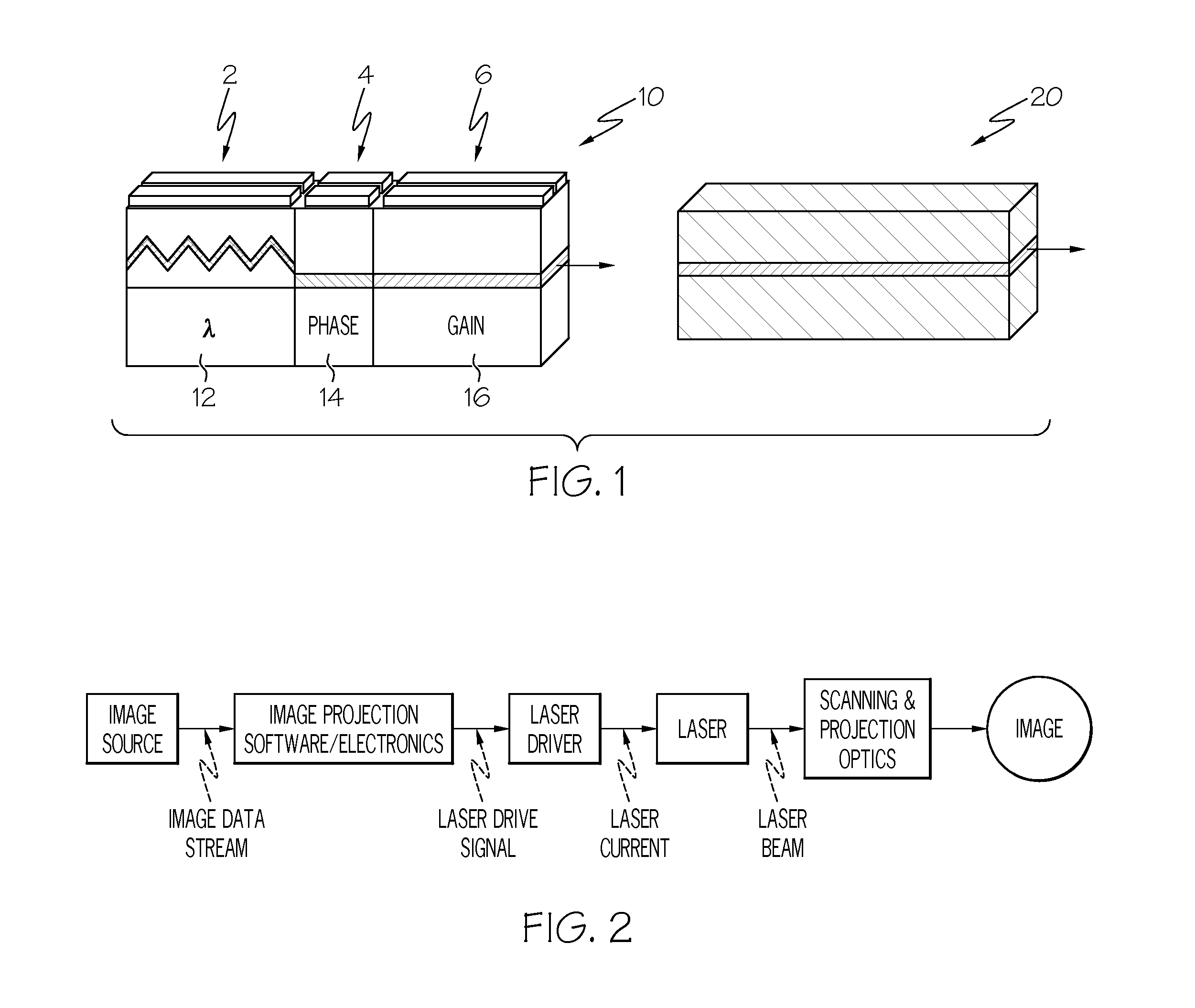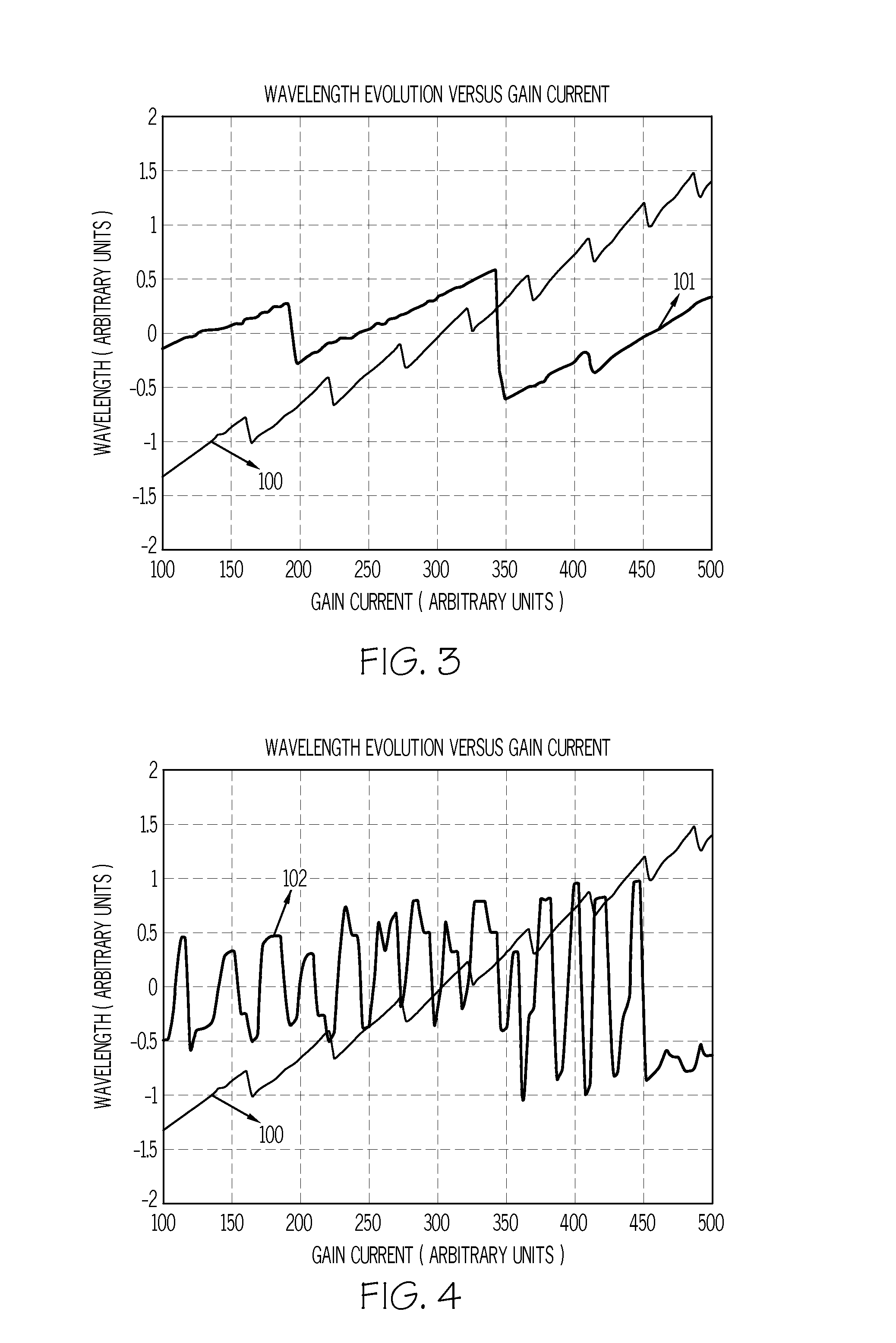Wavelength control in semiconductor lasers
a technology of semiconductor lasers and wavelengths, applied in semiconductor lasers, laser details, color television details, etc., can solve the problem of the output wavelength of a semiconductor laser moving outside of the allowable bandwidth, and achieve the effect of minimizing laser wavelength variations in a semiconductor laser
- Summary
- Abstract
- Description
- Claims
- Application Information
AI Technical Summary
Benefits of technology
Problems solved by technology
Method used
Image
Examples
Embodiment Construction
[0016]Although the specific structure of the various types of semiconductor lasers in which the concepts of the present invention can be incorporated is taught in readily available technical literature relating to the design and fabrication of semiconductor lasers, the concepts of the present invention may be conveniently illustrated with general reference to a three-section DBR-type semiconductor laser 10 illustrated schematically in FIG. 1. In FIG. 1, the DBR laser 10 is optically coupled to light wavelength conversion device 20. The light beam emitted by the semiconductor laser 10 can be either directly coupled into the waveguide of the wavelength conversion device 20 or can be coupled through collimating and focusing optics or some other type of suitable optical element or optical system. The wavelength conversion device 20 converts the incident light into higher harmonic waves and outputs the converted signal. This type of configuration is particularly useful in generating shor...
PUM
 Login to View More
Login to View More Abstract
Description
Claims
Application Information
 Login to View More
Login to View More - R&D
- Intellectual Property
- Life Sciences
- Materials
- Tech Scout
- Unparalleled Data Quality
- Higher Quality Content
- 60% Fewer Hallucinations
Browse by: Latest US Patents, China's latest patents, Technical Efficacy Thesaurus, Application Domain, Technology Topic, Popular Technical Reports.
© 2025 PatSnap. All rights reserved.Legal|Privacy policy|Modern Slavery Act Transparency Statement|Sitemap|About US| Contact US: help@patsnap.com



